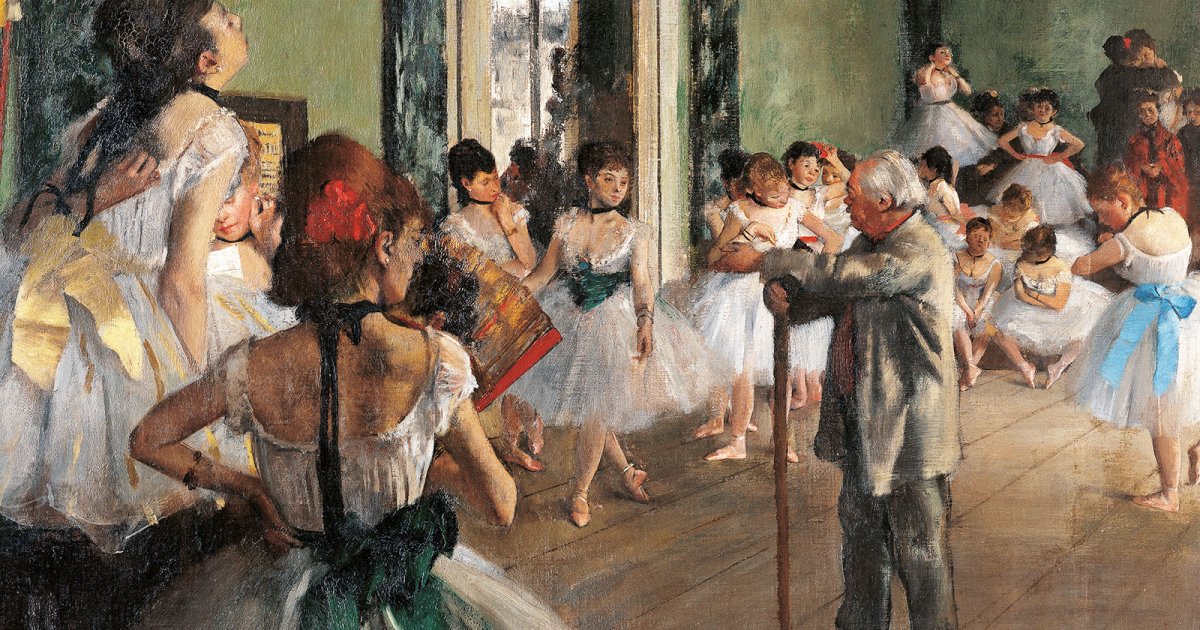MUSEE ORSAY, Degas The Dancing Class
 Language: English / USA
Language: English / USA
Finally, welcome to the fascinating The Ballet Class by Edgar Degas: this is one of the artist's best known paintings on one of his favorite themes, ballerinas.
The canvas was painted between 1873 and 1876, right around the time that the first impressionist exhibition was held in the famous photographer Nadar's studio. As you can see, Degas chose to depict the moment when a ballerina is trying a new move while being carefully watched by her teacher Jules Perrot, the ballet master of the Paris Opera. The other students, arranged in a semicircle, are resting. The painter captures them in a wide variety of poses: some are stretching to relax their muscles, others are fixing an earring or adjusting their hair. In the foreground on the left, a young girl scratches her back while her friend watches the continuing rehearsal.
In the middle, all you have to do is see how the old man is leaning on his stick to understand that he's a stern, inflexible teacher. His attention is totally focused on the ballerina. Degas chooses a decentralized angle to frame the scene, thus giving the composition a photographic dimension, as if it were a snapshot. If you pay close attention, you'll notice that some of the figures are even partially cut off. The boards of the parquet flooring with oblique lines accentuate the perspective. The scene gives you an impression of incredible spontaneity, almost as if you were watching the rehearsal session from a backseat in the room. Keep in mind, however, that this impression of spontaneity that Degas manages to convey to you has actually been studied down to the tiniest detail. In fact, it took him a very long time to complete this painting.
The painting is the result of prolonged and well-thought out work carried out between the walls of his workshop, as you can also see from the dozens of preparatory sketches that exist. Although he's often included among the Impressionists, Degas didn't rely on the "impression" of an instant; he always carefully studied the composition, relying much more on outlines than on color.
FUN FACT: Edgar Degas was also famous for writing witty jokes. One of his most famous jokes is a rude reflection on the art market world: "If someone pays 3,000 francs for a picture, it means he likes it; if he instead pays 300,000 francs, it means that others like it".



